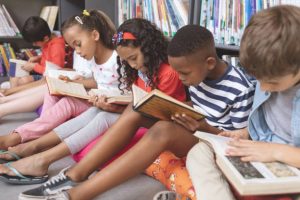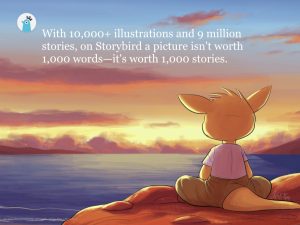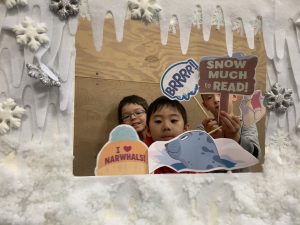
Photo: iStock by Getty Images
Research
As a starting point for this week’s research, I turned to the literature generated by scholars through the UBC portal. An article that was particularly helpful was, Mobiles for Literacy in Developing Countries (Wagner, Castillo and Murphy, 2014). The focus of the article was compiling reviews of organizations that were reaching into disadvantaged communities and attempting to improve their situation by simplifying their access to literacy technology. The non-profit organizations highlighted utilized strategies ranging from getting books into the hands of children who have varying access to education in their communities, supporting students with hearing disabilities, and connecting communities of women who are trying to make money to support their families and send their children to school. The authors were reflective as they highlighted the good that can be done through the organizations that it reviewed but it also kept asking questions about the potential damage of this kind of work:
“The prospect exists for technological developments to offer innovative tools that help meet the goals of improving education, reducing poverty, reaching gender equity, and improving child and maternal health. Or, those same developments could create new disparities between rich and poor countries and communities.” (Wagner, Castillo and Murphy, 2014).
The more I thought about this inquiry dive, the more I felt cautious. We have to be so careful about who we place our trust in and what organizations we throw our support behind. I have had some bad experiences in the past because I was ignorant of some facet of a charity I was supporting and then 5 years of We Day’s left an unpleasant taste in my mouth
This article, of course, is almost 10 years old, so some of the information and organizations were outdated or have since changed course. An important piece that I took away from my reading was that it is no longer enough to create opportunities for smiling children holding mobile devices and pass it off as education or real change (Wagner, Castillo and Murphy, 2014). In this day and age, 10 years after this article was written, we are living in an even faster digital age where we are constantly bombarded with problems and seeming solutions in the form of curated photography. This article provided a warning that, as educators, we always need to do our homework and make sure the organizations we get involved with are ethical.
All Children Reading
One of the organizations I discovered, that is still in operation, is All Children Reading. The mission statement at allchildrenreading.org is, “advancing EdTech innovation and research to improve reading outcomes for marginalized children in low-resource contexts” (allchildrenreading.org, 2022). They strive to achieve these aims by providing free access to digital libraries through three different apps: Deaf World Around You, Let’s Read and Global Digital Library.
Deaf World Around You kind of blew my mind. The e-books that are offered can potentially be translated into 28 different local and national sign languages. To the best of my understanding, if a child in Somalia needs a story translated into their local form of sign language, they can adjust the settings and a person will appear beside the screen and translate the story for them. The translator is also, as far as I can tell, a member of that child’s culture, so they immediately see themselves mirrored in the story. When I changed the setting to Samoan, a Samoan man appeared on the screen to translate the story. As I said, mind blown! The disadvantage that I noticed was that not every language had stories that were available, so there is still work to be done. This one really got me excited though and it confronted my ignorance about ASL and how, in my ethnocentric view, I thought that was a standard for Sign speakers around the world. This is terribly foolish of me, I see now, but I am nothing if not always learning.
With free e-books for children from different cultures and written in under-served languages around the world, Let’s Read Asia has nearly 10,000 e-books and audio books that are available in at least 2 languages each. The books are organized into 15 categories such as, Science, Mighty Girls, Community, Folktales, Problem Solving and Critical Thinking to name a few, for free. The issue of equitable access becomes less significant as long as there is some form of digital device with wifi available to a family or classroom.
The other app that is also open-sourced and is called Global Digital Library and it is similar to Let’s Read but it also includes a focus on mathematics as well. The collection is very impressive and I was so pleased to see many primary level resources that address positive actions we can take to take better care of our planet and address the issues of climate change.
1000×5 – Victoria
The issue of being helpful or harmful to countries that we are trying to support with donations looms large in this topic. I definitely donate weeded books to the Salvation Army but there is another local organization that our school has been partnered with for over a decade and that is 1000×5.This is a volunteer-based operation whose mission statement is to ensure that every child in Victoria has read 1000 books by the time they are 5. They collect new and gently used books for babies to 5-year-olds and I have found them to be so nice to work with. Whenever I get a huge donation from a family, for example, I am able to take any board books, repeats, or books that aren’t needed in the library and donate them. Also, whenever we have fundraisers at the school and collect food donations, I can stick the purple box out as well and encourage families to clear out the baby books as their kids grow. This organization helps me feel like I am doing some good in the local community because I can actually see the children in the families that I am helping. It is not uncommon for me to receive book donations where some of the books have donation plates from 1000×5.
Conclusion
This is an incredibly vast topic and I know that I have only just skimmed the surface, but I am dedicated to learning as much as I can about the possibilities that digital libraries can provide to people around the world who do not have the same access to education that many of us have been privileged to have in our lives.
Works Cited
Oetman, M. (2022, September 6). All children reading: A grand challenge for development. All Children Reading: A Grand Challenge for Development. Retrieved October 26, 2022, from https://allchildrenreading.org/
Signs and smiles app. Signs and Smiles. (2021, November 30). Retrieved October 26, 2022, from https://www.signsandsmiles.org/programs/signs-and-smiles-app/
Wagner, D.A., Castillo, N.M., Murphy, K.M. et al. Mobiles for literacy in developing countries: An effectiveness framework. Prospects 44, 119–132 (2014). https://doi.org/10.1007/s11125-014-9298-x
1000×5 – children’s literacy in Greater Victoria. 1000×5 Children’s Literacy – We Promote Childhood Literacy In the Capital Region. (n.d.). Retrieved October 27, 2022, from https://www.1000×5.ca/
1000X5 – thank you, donors! YouTube. (2016, October 25). Retrieved October 27, 2022, from https://youtu.be/zbdIWkjgGPI


